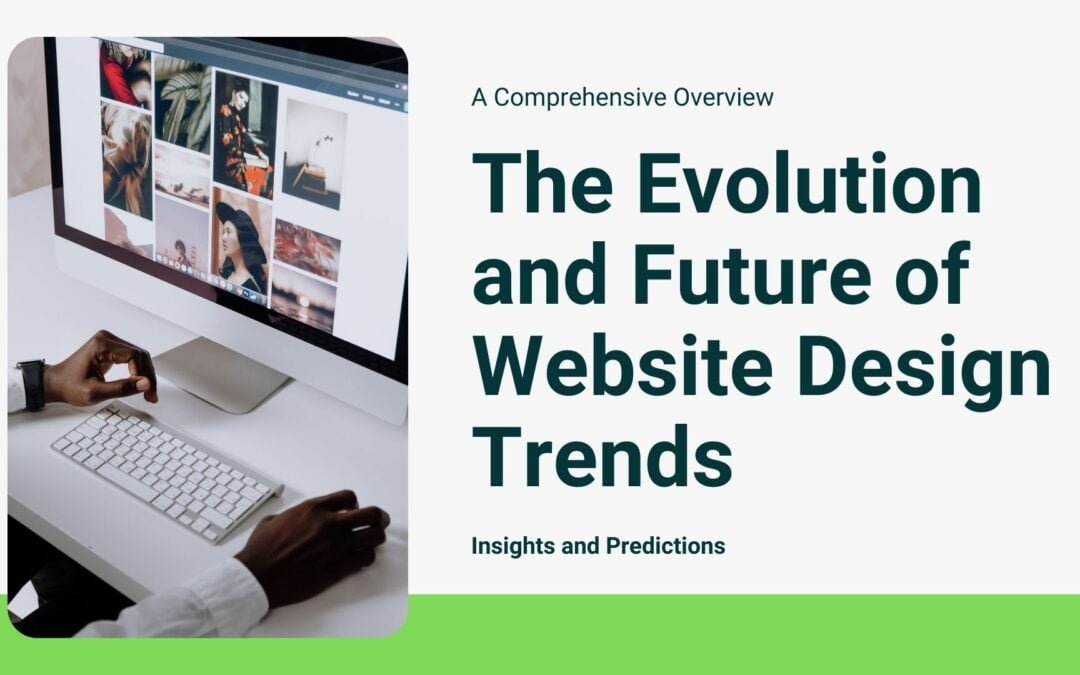Introduction
Website design trends is more than just aesthetics; it involves creating user-friendly and engaging experiences. As digital landscapes evolve, so do the strategies and technologies behind website design. This article delves into the latest trends, providing insights into how they influence user interaction and business success.
Define the Design Topic or Trend
What is Website Design?
1- Website design encompasses the visual and functional aspects of a website. It involves layout, color schemes, typography, and user interface elements that create an appealing and functional online presence.
2- Website design is a dynamic field that reflects the ongoing advancements in technology and changing user expectations. As we move into the future, it’s crucial to understand the trends shaping the industry. This comprehensive guide explores the current trends in website design, their historical context, key principles, and future directions.
Importance of Website Design
Good website design enhances user experience, boosts engagement, and supports brand identity. It also plays a critical role in achieving business objectives such as lead generation and sales.
Historical Context
Evolution of Website Design
- Early Web Design (1990s): Simple HTML pages with basic layouts.
- 2000s: Introduction of CSS and JavaScript, allowing for more interactive and complex designs.
- 2010s: Emergence of responsive design to cater to mobile users.
- 2020s: Emphasis on user experience (UX) and mobile-first design.
Influences on Modern Design
Modern website design is influenced by advancements in technology, changing user behaviors, and the growing emphasis on mobile and accessibility standards.
Key Principles
Fundamental Concepts in Design
- User-Centered Design: Prioritizing the needs and preferences of users.
- Consistency: Maintaining uniformity in design elements across pages.
- Accessibility: Ensuring that websites are usable by people with disabilities.
- Performance: Designing for fast loading times and smooth interactions.
Best Practices
- Minimalist Design: Focusing on essential elements to avoid clutter.
- Responsive Design: Adapting layouts for different screen sizes and devices.
- Intuitive Navigation: Ensuring users can easily find information.
Methodologies and Tools
Design Methodologies
- Agile Design: Iterative process with continuous feedback and improvement.
- Design Thinking: Empathizing with users to solve problems creatively.
Tools Used
- Wireframing Tools: Sketch, Balsamiq
- Design Software: Adobe XD, Figma
- Prototyping Tools: InVision, Marvel
Case Studies
Successful Design Implementations
- Airbnb: Emphasis on high-quality visuals and user-friendly navigation.
- Getyourneedsnow:Clean design with straightforward functionality.
- Dropbox: Clean design with straightforward functionality.
Lessons Learned
Analyzing successful case studies helps in understanding what works well in website design and applying those principles to new projects.
Challenges and Solutions
Common Problems
- Poor User Experience: Can lead to high bounce rates.
- Performance Issues: Slow loading times affect user satisfaction.
Addressing Challenges
- User Testing: Conduct usability tests to identify and fix issues.
- Optimization: Use performance tools to enhance site speed.
Future Trends
Emerging Trends
- Artificial Intelligence: AI-driven design tools and chatbots.
- Voice User Interface (VUI): Integration of voice commands into websites.
Potential Impact
These trends will shape the future of web design, making sites more interactive, personalized, and accessible.
Expert Opinions
Insights from Design Professionals
- John Maeda: Advocates for the intersection of design and technology.
- Don Norman: Emphasizes the importance of user-centered design principles.
Resources for Learning
Books
- “Don’t Make Me Think” by Steve Krug
- “The Design of Everyday Things” by Don Norman
Courses
- Coursera’s UX Design Course
- LinkedIn Learning’s Web Design Fundamentals
Websites
- Smashing Magazine
- A List Apart
Conclusion
The field of website design continues to evolve, driven by technological advancements and shifting user expectations. Staying updated with trends and best practices is essential for creating effective and engaging websites. As we look to the future, embracing emerging technologies and focusing on user experience will be key to success.

References
Here are five references with links for further reading on website design trends:
- Smashing Magazine – Offers articles and resources on web design trends, best practices, and tools. Smashing Magazine
- A List Apart – Focuses on web standards and best practices in web design. A List Apart
- Nielsen Norman Group – Provides insights and research on user experience and usability. Nielsen Norman Group
- W3Schools – A comprehensive resource for learning web design and development basics. W3Schools
- Web Designer Depot – Features articles on the latest design trends and web development techniques. Web Designer Depot
